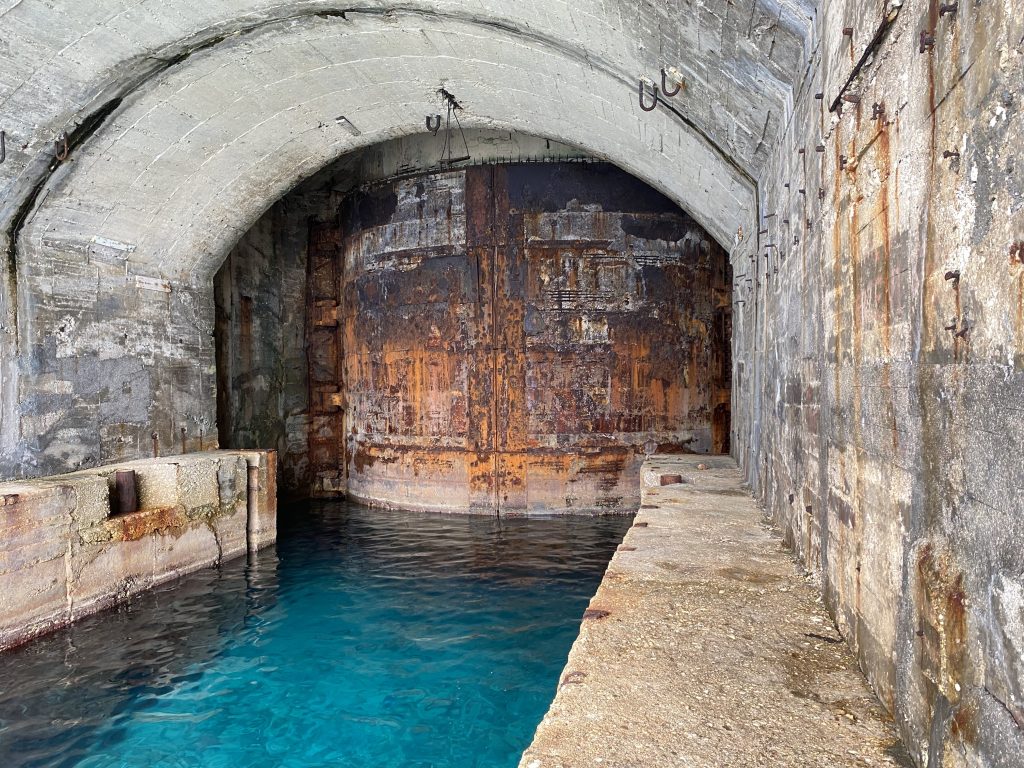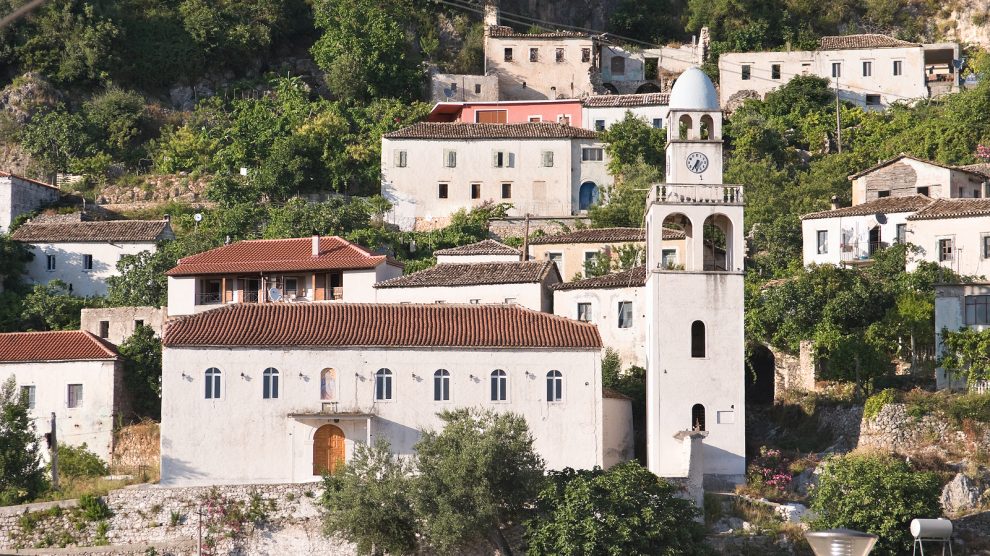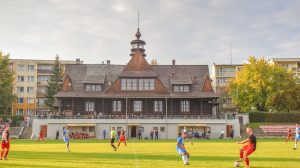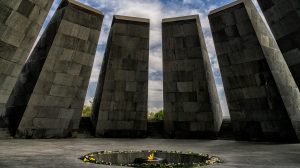The Albanian Riviera is often lauded as a ‘budget-friendly alternative’ to Greece, Italy, or France. Forget the low prices, however: it is entirely worth visiting simply because it is stunning.
As my friends and I rounded the bend and saw Dhërmi for the first time, every passenger in the car simultaneously yelled, “Pull over”!
The exposed grey rock of the Ceraunian Mountains curved inward from the azure Ionian Sea to form a U-shape. The village’s white houses and churches clung to the sheer cliffs of each side of the U while a stream cascaded down the ravine in between. The bells of goats grazing in the ravine and the roar of small waterfalls were the only sounds as the sun began to set.
We parked our car and began to wind through the grapevine- and fig tree-filled alleys until we reached the stone steps leading towards the 13th-century Monastery of St Mary, high above a village already high above the sea. As the sun finally neared and then sank below the horizon, Dhërmi’s white buildings turned pink and then an orange which nicely complemented their terra cotta shingles.
Greece’s Diapontian Islands were clearly visible—as was Corfu, from certain angles—and the gravestones around the church were all written in the Greek alphabet. A quick Google search confirmed the locals spoke the archaic Himariote dialect of Greek, spoken by Albania’s Greek minority in the Himarë region. Relative geographic isolation has preserved vernacular from medeival Greek lost in the standard modern form of the language, and the entire cliffside village seemed lost in time.
Even as we walked down to the car, I was in disbelief at what we had found: a Greek exclave in Albania. The only pictures of Dhërmi I had seen in tourist guides showcased its crystalline beaches and nightclubs, but these were so far below the village itself I could barely see them.
After spending the night in the town of Himarë, the next morning we pulled over on the coastal road just north of the beautiful Porto Palermo fortification and hiked down to Mateus Beach. The beach itself is tucked away between stone slabs, and the white sand makes the sea look like impossibly-fluid turquoise glass.

Climbing on the rocks along the sea, I found not only crabs and sea anemones, but cement bunkers dating from the rule of Stalinist dictator Enver Hoxha. Hoxha feared Albania would be invaded by one of its neighbours and built hundreds of thousands of concrete and steel bunkers around the country; these were hidden by bramble but were directly across the strait from Corfu. At the time of the bunkers’ construction, Greece’s membership in the avowedly anti-communist North Atlantic Treaty Organisation (NATO) garnered the utmost suspicion, but times have changed. Albania and Greece are now NATO allies.
Forbidden submarines
Just past the beach lies yet another reminder of the Cold War’s militarism: giant, rusted-shut doors to a subterranean submarine base. The blast-resistant gates lie inside a concrete tunnel that continues through the small peninsula to open into the bay of Porto Palermo.
Fish school in front of the orange gates, which dramatically contrast the bright teal water. The interior is still a restricted military zone, but those curious can easily find pictures online taken by urban—or, rather, seaside?—explorers that have infiltrated the complex.

After a quick stop to see Porto Palermo itself, we continued south of Sarandë and Ksamil to the Butrint Archaeological Park. Butrint lies on a peninsula bounded by Lake Butrint and the Vivari Channel, which can only be crossed by a cable ferry, and the entire area is protected by a national park.
Butrint’s UNESCO World Heritage Site contains ruins and artifacts from the Iron Age through Medieval Period—including a Roman amphitheatre, temple to Asclepius, baths, and a sixth-century baptistery with a well-preserved mosaic.
The stunning ruins are forested and surrounded by coastal mountains and the lake’s marshes, but when we were there on a Sunday in April, there were no other visitors. Full of blooming trees and wildflowers, the archaeological site felt as much like a botanical garden.

Butrint
The Albanian Riviera is often lauded as a “budget-friendly alternative” to Greece, Italy, or France, and it’s true—it is blissfully affordable.
However, it is entirely worth visiting simply because it is stunning. With rocky mountains that fall straight into the impossibly blue Ionian Sea—creating truly hidden beaches in coves and canyons—and scenic villages with olive orchards, rich history and delicious seafood, this stretch of the Ionian is nothing short of a paradise that also remains thankfully free of Santorini’s crowds.
That is, at least for now.
Unlike many news and information platforms, Emerging Europe is free to read, and always will be. There is no paywall here. We are independent, not affiliated with nor representing any political party or business organisation. We want the very best for emerging Europe, nothing more, nothing less. Your support will help us continue to spread the word about this amazing region.
You can contribute here. Thank you.







Add Comment